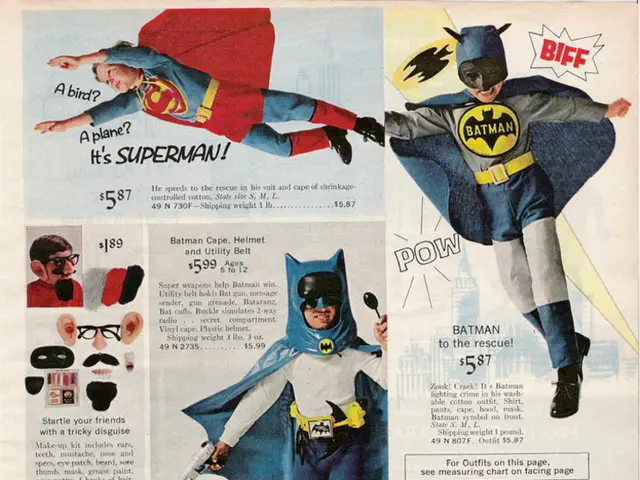Mastering a Chatty Brand Identity: A Guide for Engaging Conversations
In today's competitive market, businesses are constantly seeking ways to connect with their audience on a deeper level and improve their brand identity. One effective strategy that has gained traction is the development of a conversational brand voice.
By adopting a conversational tone, businesses can build empathy and rapport with their customers, leading to increased engagement and loyalty. According to Linda Lambert, a professor emeritus at California State University, a good conversation can significantly influence the direction of change.
To develop a conversational brand voice, it is essential to know the audience inside and out and tailor the brand voice to them. This involves defining core brand voice attributes, creating a brand persona and voice guidelines, segmenting the audience for tone adaptation, using a clear, engaging, and natural communication style, ensuring consistency across all touchpoints, and drawing inspiration from successful brand voices.
Start by defining 3-4 primary voice traits aligned with your brand values and desired positioning. For instance, a brand might choose a casual, friendly tone to reflect its approachable nature, or a more formal, professional tone to convey authority and expertise. Clear definitions and “do” and “don’t” examples for each trait help guide consistent communication across channels.
Next, develop a detailed brand persona embodying your brand’s personality and voice characteristics. This persona should reflect your brand's unique identity and values. Set voice versus tone guidelines delineating the consistent brand voice (who you are) and adaptive tone (how you say it in varying contexts), helping maintain coherence while tailoring messages appropriately.
Identify distinct audience segments based on demographics, psychographics, relationship stage, and professional role. Adapt your conversational tone to match each segment’s communication preferences, technical understanding, and motivations while keeping the core voice consistent.
Aim for approachable, simple language that feels authentic. Research shows that conversational, human-like tones improve trust by 22%, increase knowledge retention, and activate brain regions linked to decision-making and emotional engagement more than formal corporate language.
Maintain uniformity in voice across websites, social media, customer service, and marketing materials. Consistency builds recognition and trust, with a clear brand voice fostering emotional connection and loyalty.
Look at brands like Spotify, which uses humor and casual friendliness, or Tiffany, whose voice is elegant yet clear. Different brands leverage conversational voices that reflect their identity and audience to increase engagement.
Engage team members across marketing, sales, and customer service to align on voice application and ensure messaging reflects the intended brand personality.
In 2022, companies on average spent 9.5% of their revenue on marketing to improve their brand identities. By investing in a conversational brand voice, businesses can not only improve their brand identity but also lead to more conversions and revenue.
A study by Salsify found that 46% of U.S. consumers are willing to pay more for brands they trust. By developing a conversational brand voice, businesses can build that trust, deepen engagement, and elevate their brand identity. Embrace storytelling as a way to connect with your audience emotionally and use data analytics to identify trends when it comes to what your audience purchases, when, why, and how.
Incorporate humor and wit sparingly to make your brand voice more engaging. However, avoid common mistakes such as overdoing slang or jargon, neglecting professionalism, and ignoring the value of consistency in your brand voice.
By adopting a conversational brand voice, a brand can streamline the decision-making process and make the next step in the customer's story more likely to include purchasing the product. A conversational brand voice can help a brand stand out from the crowd by showing its willingness to connect with customers on a human level.
A home improvement company could tailor its brand voice to resonate with its audience in the 'home-and-garden' and 'lifestyle' sectors, for example, by adopting a friendly, approachable tone suited for DIY enthusiasts and home owners seeking inspiration for their homes. By incorporating a conversational voice that mirrors the everyday language used by its customers, the company could foster a sense of empathy and build trust, ultimately driving increased engagement and sales.
As part of its audience segmentation strategy, the company might also develop a conversational voice for gardening enthusiasts that is educational, respectful of their expertise, and offers practical advice to solve common gardening challenges. By adopting this tone, the company could demonstrate its authority and expertise in the field, further deepening its connection with its gardening audience.




